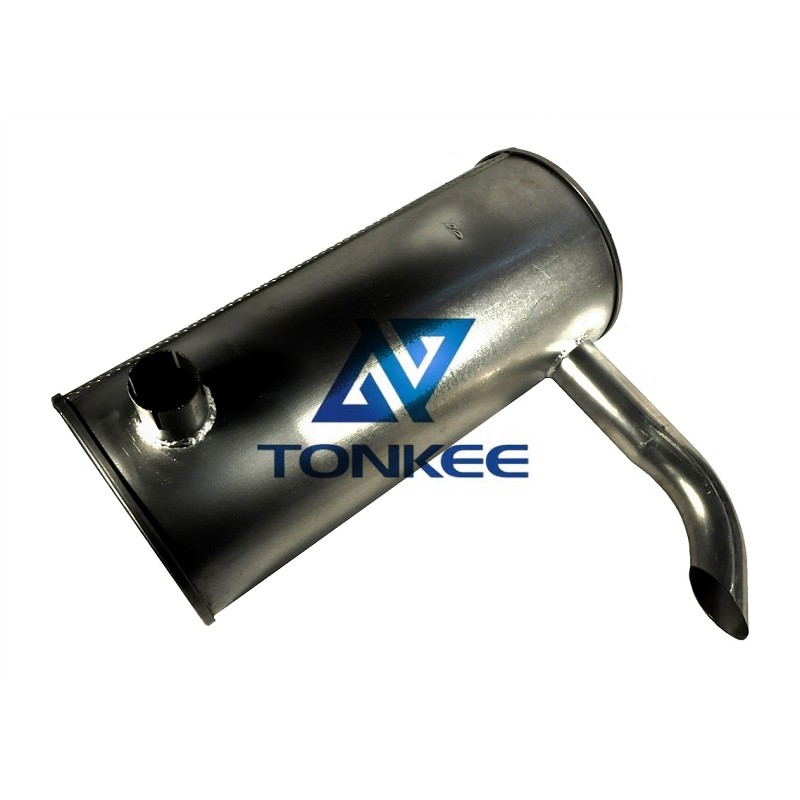
The exhaust muffler box of the Hitachi EX60-2 and EX60-3 series is typically constructed from high-quality, heat-resistant steel or stainless steel.
These materials ensure longevity and corrosion resistance, even in harsh operating conditions.
One of the primary functions of the exhaust muffler box is to reduce the noise generated by the excavator's engine. It achieves this by channeling the exhaust gases through a series of baffles and sound-absorbing materials. The design is optimized to minimize sound emissions, creating a quieter and more comfortable working environment for operators and nearby personnel.
The exhaust muffler box is equipped with catalytic converters and diesel particulate filters (DPF) in compliance with emission regulations. These components help reduce harmful emissions, making the excavator more environmentally friendly and ensuring adherence to strict emission standards.
Heat Dissipation:
The exhaust system in an excavator generates a significant amount of heat. The exhaust muffler box is designed to dissipate this heat efficiently, preventing excessive heat buildup that could damage nearby components or pose a safety hazard.
The exhaust muffler box is designed to be easily mounted to the excavator's frame or chassis. Secure mounting is essential to prevent vibration and potential damage during operation. Proper installation ensures that the muffler box effectively performs its noise reduction and emission control functions.
Maintenance and Serviceability:
Regular maintenance is crucial for the continued performance of the exhaust muffler box.
It should be designed for easy access and serviceability, allowing technicians to inspect and replace components like catalytic converters, DPFs, or muffler elements as needed. This reduces downtime and maintenance costs.
Exhaust Gas Routing:
The muffler box is integrated into the exhaust system's routing, ensuring that exhaust gases are safely directed away from the operator and sensitive components. Proper routing also helps maintain optimal engine performance.
In some models, temperature sensors may be integrated into the exhaust muffler box. These sensors monitor the temperature of the exhaust gases and the box itself. If temperatures exceed safe limits, warnings or shutdowns may be triggered to prevent overheating and potential damage.
Manufacturers often offer customization options for the exhaust muffler box to meet specific customer requirements. These options may include variations in size, materials, and configurations to accommodate different operating conditions and regulations.
Compliance with Standards:
The exhaust muffler box is designed to comply with industry and government standards for noise levels and emissions. This ensures that the excavator meets environmental regulations and maintains a positive reputation for environmental responsibility.


